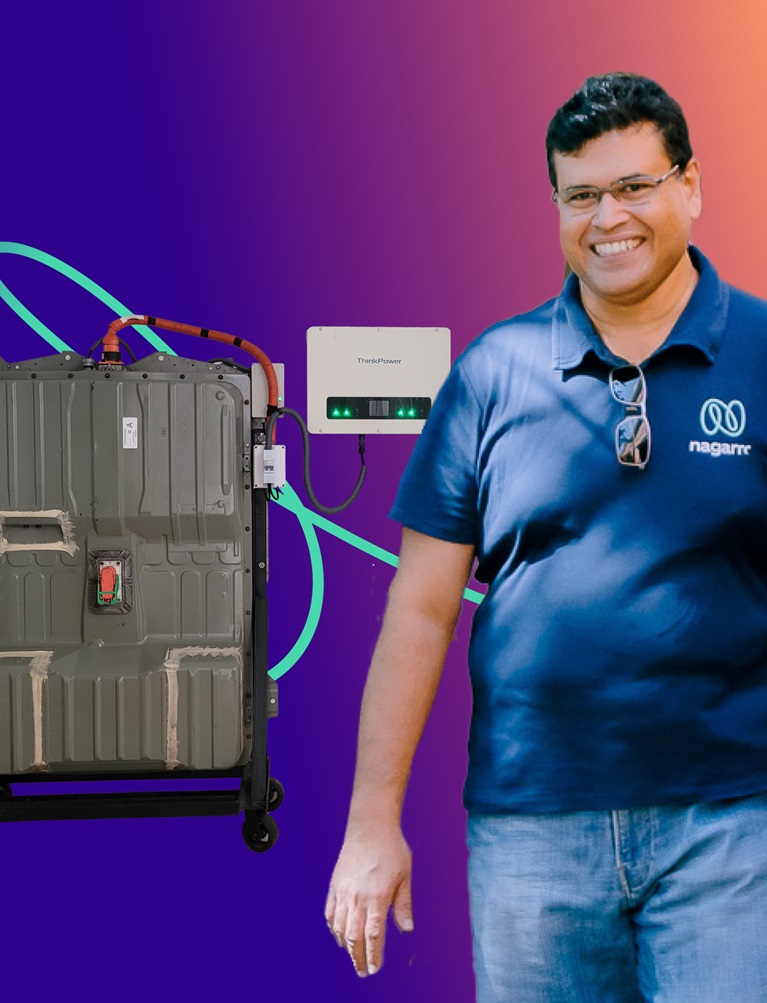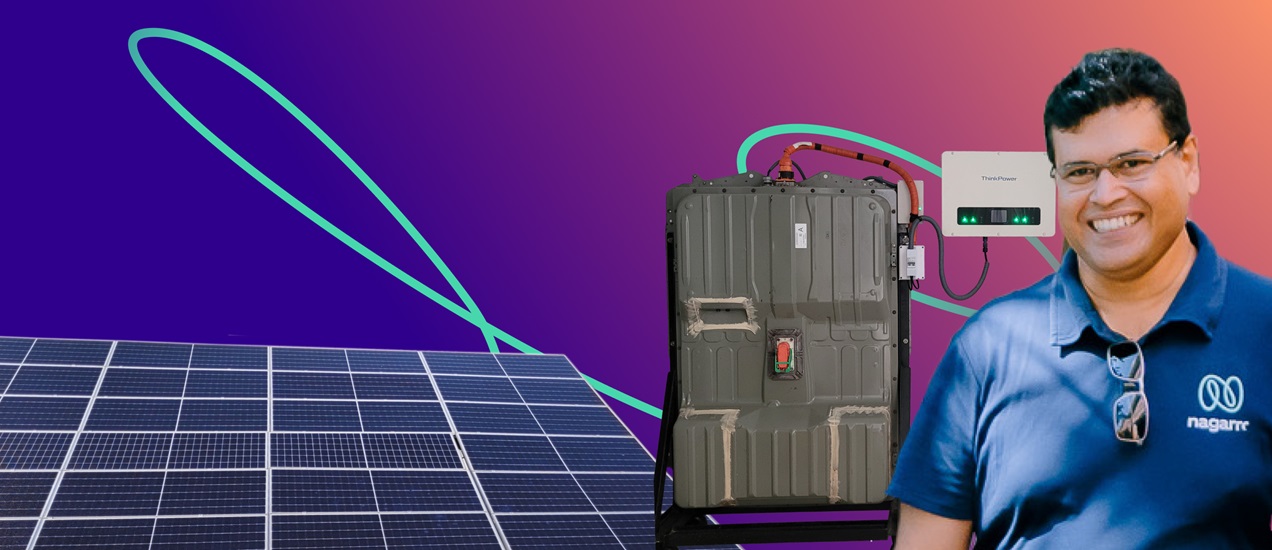In this edition of Nagarrians at play, we present Ruwan Jayanetti, an embedded technology expert at Nagarro and an EV battery recycling enthusiast during his free time.
[Anushka] How did you personally become interested in the issue of EV battery degradation and recycling, and what inspired you to take action?
[Ruwan] I guess the geek in me is never far! I have an EV, but an older one. Mine started to show diminishing returns! The battery is showing signs of aging. One of the major drawbacks of EVs is their batteries' longevity. The battery is the most expensive part of the car, potentially costing up to 50% of the car's production cost. Generally, with today's technology, replacing an EV battery with a new battery is economically not viable. No EV manufacturer offers any meaningful battery replacement program. They anticipate the battery will last for the lifetime of the car. Once the battery degrades, it is the end of life for the vehicle, though the rest still functions.
Can you share more about your own experience with battery degradation in your electric vehicle? How did it impact your daily life and drive your initiative?
I experienced the same with my electric vehicle. After around eight years of use, 70k km on the dash, its range dropped to around 60 km per charge from the original 150 km, making it unusable in my daily commute. Yes, this is an earlier model, but it made me wonder if we could be doing more with these batteries.
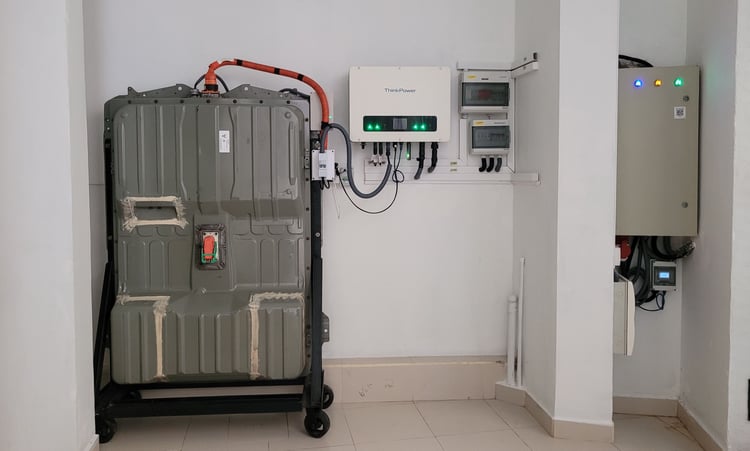 A pic of the setup at Ruwan's home
A pic of the setup at Ruwan's home
What motivated you to adopt the "Reduce, Reuse, Recycle" approach for EV batteries rather than opting for traditional disposal or recycling methods?
Taking the Reduce-Reuse-Recycle (RRR) mantra, we should give EV batteries a second life in different applications. They will still hold enough capacity to be useful in multiple applications, primarily as an energy storage device to cushion out fluctuations in renewable energy sources. The world is moving forward with de-carbonizing the electricity grid, and this means more and more renewable energy sources like solar and wind energy are powering the grid.
The inherent nature of uncertainty/fluctuation in renewable energy sources limits the grid's portion of renewable energy sources to maintain its stability. At the same time, electricity grids are getting connected and smarter. This connected capability makes deploying small-scale energy storage facilities across the grid possible to level out the uncertainty of renewables. This can go to each household level with its own energy storage. Some companies are already doing this, like Tesla Power Wall.
Decommissioned EV batteries are a perfect solution to store energy domestically or at a grid scale. Their safety levels are over-engineered for stationary storage applications. Also, EV batteries are designed to withstand a car crash over 100km/hr and can get flooded safely! Being an inventor, tech geek, and environmentalist made me take matters into my own hands. I made a plan to become completely carbon-neutral for my regular ground transport and domestic electricity consumption.
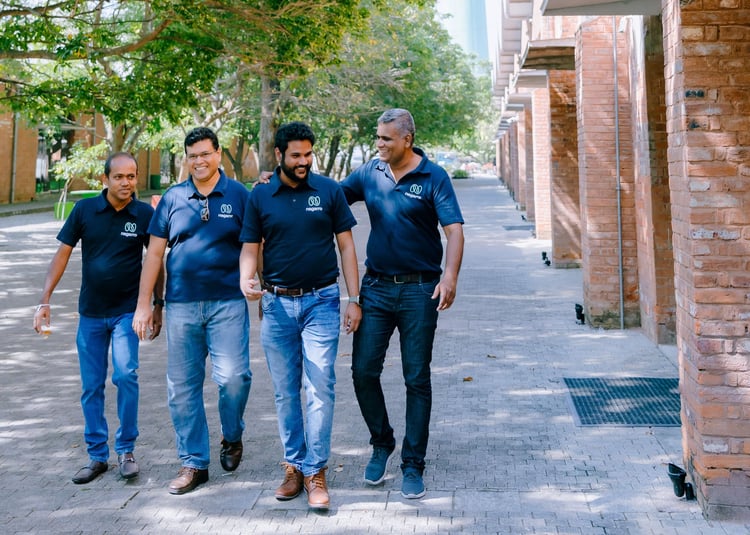 Ruwan on a casual walk with Nagarro colleagues
Ruwan on a casual walk with Nagarro colleagues
Could you elaborate on the challenges you faced when trying to adapt an EV battery to function with a domestic solar inverter? What were the technical obstacles you encountered?
My main challenge was getting the battery designed to work with an EV and to function with a domestic solar inverter. The obstacle I faced here is that the battery talks to the car with a specific language or, more specifically, a specific protocol. Inverter talks about a different protocol of stationary storage batteries it is designed to work with. These protocols are vastly different. We need a protocol translator between the EV battery and the inverter. Generally, EV manufacturers keep this protocol private to them. Inverter protocols that talk to batteries are somewhat public.
The process of decoding the EV battery protocol is quite a challenge. We have to reverse engineer the EV battery language. I was not alone here. I turned to the internet to see what others were doing in this regard. I could not find any reference to whether anyone is attempting this type of EV battery deployment effort with a domestic solar inverter. However, there was plenty of EV reverse engineering literature and experts in the community.
With the community information and some support, I was able to get some initial leads on the battery protocol. Then, I was on my own, dumping all the battery communication and decoding the data to find meaningful information that represents the parameters I'm interested in, such as battery voltage, state of charge, current, temperature, etc., which the inverter needs to operate. With my reverse engineering skills and community information, I decoded all the parameters the inverter requires to operate safely.
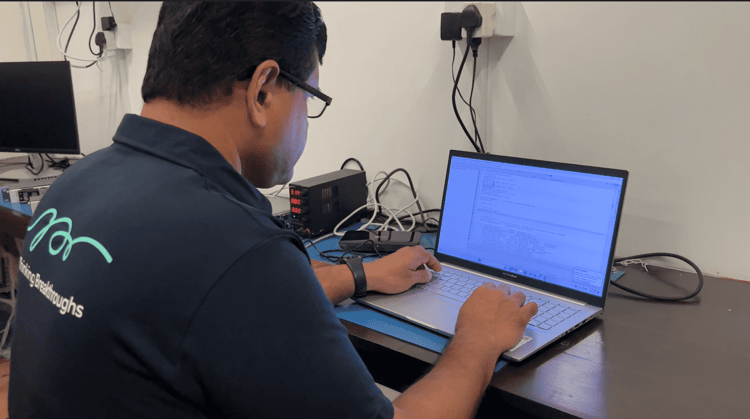
Ruwan busy at work
You mentioned the need to decode the communication protocols of the EV battery. How did you acquire the knowledge and skills required for this reverse engineering process?
Normally, EV batteries communicate over CAN bus, but some new models are on Ethernet. Inverters use CAN and RS485 buses commonly. In my case, both battery and inverter communicate over CAN bus. I designed and built a small electronic CAN bridge device having two CAN busses connected to a small microprocessor (microcontroller, STM32F105) and wrote the required software (firmware) to it to talk to the battery on one CAN bus and talk to the inverter on the other CAN bus. The software translated protocol from battery to inverter and vice versa.
How has your initiative contributed to reducing your carbon footprint and achieving energy independence? Can you share any specific data on the impact of your project?
I achieved complete energy independence for my domestic electricity usage and regular transportation. I sufficiently offset the carbon emissions from my rarely used gas-powered car by exporting additional solar energy generated to the grid, making me carbon neutral in my domestic energy consumption and regular transportation. The rooftop solar generates around 1500 kWh per month. About 1200 kWh has been utilized per month for home, and out of that, EV charging utilizes around 500 kWh per month. The rest of the electricity has been exported to the utility grid. 
Ruwan (2nd from top-left) with fellow Nagarrians at the Sri Lanka hive
NagarriansAtPlay is a series that showcases Nagarrians following their passions. In this series, we bring to you some of our remarkable colleagues who have made it big globally, in their respective fields, and have inspired many to follow their dreams.


